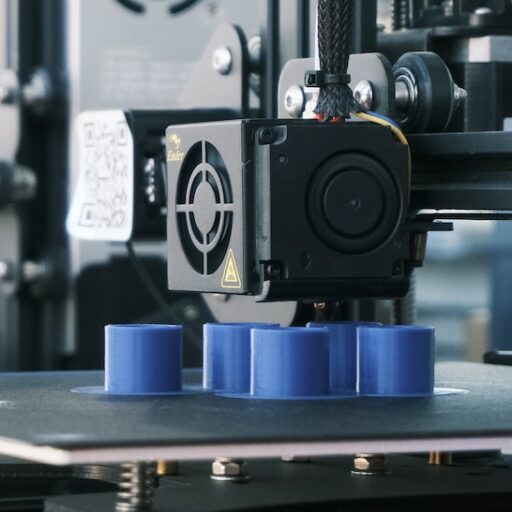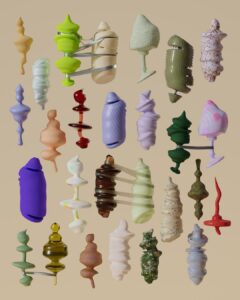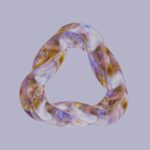Support our educational content for free when you purchase through links on our site. Learn more
What Products are 3D Printed Today?

[2023] 3D printing technology has come a long way since its inception, and its impact on various industries and everyday life is becoming more prominent. From manufacturing to healthcare and even consumer products, the possibilities of what can be 3D printed are expanding rapidly. In this article, we will explore the wide range of products that are being 3D printed today, the industries that utilize this technology, and some popular consumer products that have been revolutionized through 3D printing.
3D Printing in Various Industries
Designing the Cars of Tomorrow
The automotive industry has embraced 3D printing for prototyping and manufacturing. Car manufacturers are using 3D printing to create intricate parts, molds, and even entire car bodies with advanced materials like carbon fiber composites. This enables the creation of lighter, more fuel-efficient vehicles with improved performance. Companies like BMW have been at the forefront of 3D printing in automotive design, using the technology to push the boundaries of what's possible.
Revolutionizing Healthcare
In the healthcare industry, 3D printing has been a game-changer. Complex anatomical models can be printed to assist in surgical planning and medical training. Customized implants and prosthetics can be created to perfectly fit a patient's unique anatomy, improving patient outcomes and quality of life. Companies like Formlabs offer 3D printers specifically designed for medical applications.
Advancing Aerospace Manufacturing
Aerospace manufacturers are using 3D printing to produce lightweight components that reduce fuel consumption and increase performance. Complex geometries that were previously impossible to manufacture can now be easily 3D printed, improving efficiency and reducing assembly time. NASA has even successfully 3D printed rocket engine parts. Brands like Stratasys are leading the way in aerospace 3D printing technologies.
Transforming the Fashion Industry
The fashion industry has also been impacted by 3D printing. Designers can now create intricate and unique garments that were once unimaginable. 3D printed jewelry, shoes, and accessories offer endless possibilities for customization and personalization. Brands like Iris van Herpen have showcased the potential of 3D printing in fashion, pushing the boundaries of what's considered possible in wearables.
Expanding Architecture and Construction Possibilities
Innovations in construction are being driven by 3D printing. From printing entire houses to creating intricate architectural models, this technology has the potential to revolutionize the way we build. 3D printing in construction offers faster and more cost-effective building methods, reducing material waste and labor costs. Companies like ICON are already printing homes using advanced 3D printing techniques.
Unleashing Creativity in Art and Design
Artists and designers have embraced 3D printing as a medium for creative expression. Sculptures, installations, and intricate designs can be brought to life through additive manufacturing. The ability to transform digital designs into physical objects gives artists new avenues for exploration and self-expression. Popular 3D printing brands like Ultimaker provide tools and resources for artists and designers to unleash their creativity.
Popular Consumer Products Made with 3D Printing
Customizable Phone Cases and Accessories
One of the most popular consumer products made with 3D printing is phone cases and accessories. With the ability to easily customize designs, individuals can create unique and personalized phone cases that reflect their style and personality. Companies like Shapeways offer a wide range of customizable and 3D printed phone cases, ensuring a perfect fit and protection for your device.
Personalized Jewelry and Accessories
Jewelry and accessories are another area where 3D printing has made a significant impact. Customizable rings, necklaces, and bracelets can be created with intricate designs that would be challenging with traditional manufacturing methods. 3D printing allows for the production of unique pieces tailored to individual preferences. i.materialise offers a wide range of 3D printed jewelry options, enabling customers to express their personal style.
Novelty Items and Collectibles
Remember the famous line "I have a giant 3D printed T-Rex skeleton in my living room"? Well, maybe not, because that's not a quote from an actual customer review, but you get the idea! 3D printing allows for the creation of unique novelty items and collectibles. From character figurines to movie props, the possibilities are endless. MyMiniFactory is a great platform to discover a wide range of 3D printed collectibles.
Customized Home Decor
Bring your unique style into your home with 3D printed home decor items. Custom lighting fixtures, planters, and decorative objects can be easily personalized to elevate the ambiance of any space. Companies like IKEA have also started experimenting with 3D printed products to offer customizable and sustainable home decor solutions.
Innovative Kitchen Gadgets
We all love a good gadget in our kitchen, and 3D printing has brought innovation to this space as well. Unique kitchen utensils and tools can be designed and printed to make cooking and baking more efficient and enjoyable. Thingiverse is a popular platform to find and print kitchen gadgets designed by the community.
FAQ
What products are 3D printed?
The range of products 3D printed today is incredibly diverse. It includes automotive components, medical devices, aerospace parts, fashion accessories, art and design objects, consumer goods, and much more. The possibilities are expanding as technology advances and new materials become available.
What industries use 3D printing today?
The industries that utilize 3D printing today include automotive, healthcare, aerospace, fashion, architecture and construction, art and design, and consumer goods. 3D printing has found applications in nearly every industry, with its potential to save costs, improve efficiency, and enable new design possibilities.
What consumer products are 3D printed?
Consumer products that are commonly 3D printed include phone cases, jewelry, fashion accessories, home decor items, kitchen gadgets, and unique collectibles. These products offer customization options and unique designs that stand out from mass-produced alternatives.
How does 3D printing benefit consumers?
3D printing benefits consumers by providing endless customization options, higher product personalization, and access to unique designs. It allows consumers to have a direct role in the creation process and transforms ordinary products into personalized and meaningful possessions.
Is 3D printing expensive?
The cost of 3D printing can vary depending on factors such as the complexity and size of the object, the materials used, and the type of printer. While some 3D printers may have a high upfront cost, the ability to create customized products can ultimately lead to cost savings in the long run.
Are 3D printed products of good quality?
The quality of 3D printed products has significantly improved over the years. With advancements in technology and an array of high-quality materials available, 3D printed products can rival traditionally manufactured items in terms of durability and aesthetic appeal. However, it is still essential to consider the specific material and printing process used for each product to ensure its quality.
Quick Tips and Facts
- 3D printing is revolutionizing various industries, including automotive, healthcare, aerospace, fashion, architecture, and art.
- Popular consumer products made with 3D printing include phone cases, jewelry, home decor, kitchen gadgets, and collectibles.
- 3D printing offers endless customization options and unique designs that stand out from mass-produced alternatives.
- Consumer adoption of 3D printing continues to grow as the technology becomes more accessible and affordable.
- The quality and range of materials available for 3D printing have improved significantly, allowing for durable and visually appealing products.
In conclusion, 3D printing has transformed the manufacturing landscape and consumer experience across a wide range of industries. From customized phone cases and jewelry to advancements in healthcare and aerospace, the possibilities for what can be 3D printed today are virtually endless. Whether you are looking to personalize your accessories or witness the latest innovations in different sectors, 3D printing offers a glimpse into the future of manufacturing and design. So, embrace this exciting technology and unleash your creativity!




